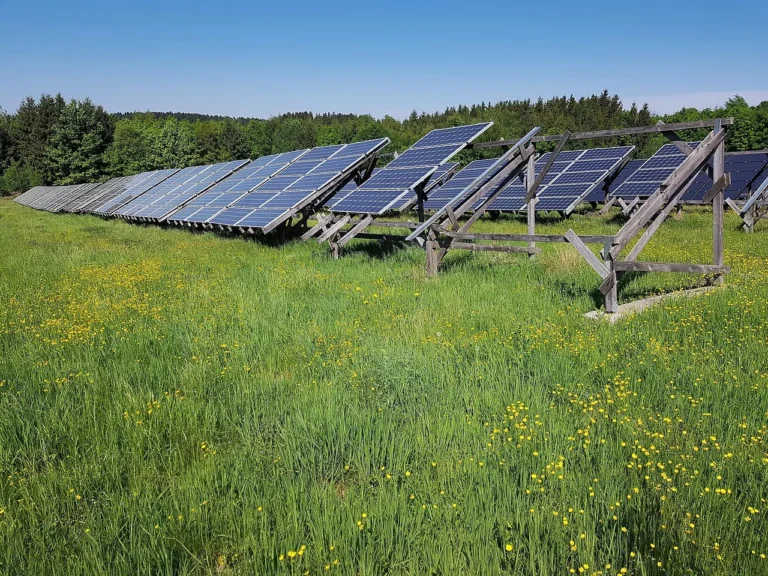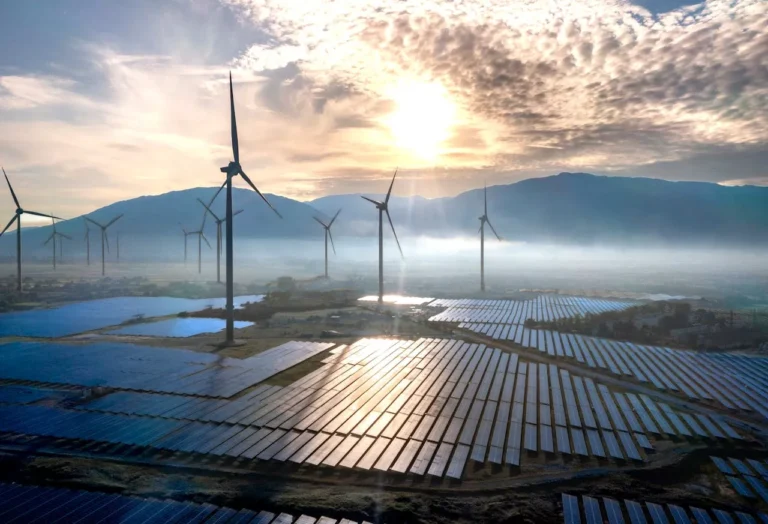
Argonne’s Energy Storage Breakthroughs Pave the Way for a Strong and Secure Energy Future
Batteries, often thought of as the silent workhorses of modern life, power far more than our smartphones, laptops, and electric vehicles. While their presence in consumer electronics and transportation is well known, energy storage technologies have a much broader and deeper impact on the energy landscape. They are critical tools for capturing energy when it is available and storing it for later use — a capability that strengthens the power grid, buffers against supply chain risks, and bolsters U.S. manufacturing competitiveness.
At the forefront of these innovations is the U.S. Department of Energy’s (DOE) Argonne National Laboratory, a global leader in battery research and development. Argonne’s scientists are pioneering advancements across the entire energy storage lifecycle — from designing new materials that bypass the need for scarce, critical resources, to applying storage solutions in real-world environments, to creating cost-effective recycling processes that extend the value of battery materials after their first life.
The Promise and Complexity of Energy Storage
Energy storage offers far-reaching benefits. It allows for the seamless integration of renewable energy sources like wind and solar into the grid, supports resilience during peak demand or power outages, and enables new technologies in transportation and industry. However, as with many transformative technologies, challenges persist.
One major challenge is the battery supply chain. While scientific progress over recent decades has dramatically improved the capacity, efficiency, and lifespan of lithium-ion batteries, the materials required to build them — such as lithium, cobalt, and nickel — are concentrated in a handful of countries. This geographic imbalance makes the supply chain vulnerable to market volatility, geopolitical tensions, and logistical disruptions.
Lithium-ion batteries have become the gold standard for powering electric vehicles, home energy systems, and large-scale grid applications. Their ability to deliver high energy density and long service life has transformed the reliability and flexibility of electricity supply, making the grid better equipped to handle both rising demand and natural disasters. But their reliance on imported raw materials presents a strategic vulnerability for the U.S.
Reducing Dependence on Critical Imports
Recognizing these risks, the DOE and its network of national laboratories are working proactively to safeguard the nation’s energy security. The goal: develop safe, cost-effective energy storage systems that can be produced domestically using abundant materials.
Argonne researchers are exploring alternatives to traditional lithium-ion technology, including sodium-ion batteries, which use sodium — a material far more common and evenly distributed worldwide. Similarly, water-based battery chemistries are under investigation for stationary applications where safety, cost, and environmental impact are critical. These innovations could reduce dependence on critical minerals while expanding the diversity of available energy storage options.
By broadening the materials base for battery production, Argonne’s work helps shield the U.S. energy infrastructure from price shocks, supply interruptions, and other external threats. This resilience is particularly important as the electrification of transportation and industry accelerates, increasing the nation’s reliance on battery systems.
Argonne’s Legacy of Battery Innovation
Argonne’s reputation in battery science is long established. One of its most influential contributions has been the development of the nickel-manganese-cobalt (NMC) oxide cathode, a material used extensively in today’s electric vehicles for its high energy density and stability. This innovation, born from years of fundamental research, has helped push EV technology into the mainstream, enabling longer ranges and better performance.
Building on this legacy, Argonne is now leveraging advanced computational tools, including artificial intelligence (AI) and machine learning, to accelerate the discovery of next-generation battery materials. AI-driven approaches allow scientists to screen thousands of potential compounds quickly, identifying the most promising candidates for experimental testing. This shortens the timeline from concept to commercialization and enables breakthroughs that might otherwise take decades.
Aligning Science with Market Needs
In addition to materials discovery, Argonne emphasizes the importance of matching scientific advances with real-world requirements. Battery technologies must not only perform well in the lab but also meet the practical needs of manufacturers, grid operators, and consumers. To this end, Argonne collaborates with industry partners, policymakers, and other research institutions to ensure its innovations are relevant, scalable, and economically viable.
These collaborations extend beyond the laboratory bench. Argonne supports U.S. innovation ecosystems by offering expertise, testing facilities, and analytical tools to companies ranging from startups to major automakers. This partnership-driven approach helps speed the translation of new ideas into market-ready products, ensuring that American manufacturing remains competitive in a rapidly evolving global market.
The Role of AI in Accelerating Discovery
Artificial intelligence is proving to be a transformative tool in Argonne’s battery research. By analyzing large datasets of material properties, chemical interactions, and performance metrics, AI can uncover patterns that would be difficult or impossible to detect through traditional methods.
This data-driven approach not only guides the selection of candidate materials but also helps optimize manufacturing processes and predict battery behavior under various conditions. As a result, researchers can focus their experimental efforts on the most promising pathways, saving time and resources while increasing the likelihood of success.
A Vision for Domestic, Sustainable Energy Storage
For Venkat Srinivasan, director of the Argonne Collaborative Center for Energy Storage Science (ACCESS) and the Low-cost Earth-abundant Na-ion Storage Consortium, the mission is clear:
“Batteries are a foundation for American energy abundance, and Argonne researchers can help ensure that tomorrow’s energy storage technologies are safe, efficient, long-lasting, and domestically produced. Rooted in fundamental science, our approach supports the U.S. energy storage landscape through practical innovations that use a wide array of battery materials. We’re also harnessing the power of AI to accelerate the pace of discovery and leapfrog current energy storage paradigms.”
This vision encompasses not only technological advancement but also sustainability. As battery use grows, so does the need for effective recycling methods that recover valuable materials for reuse. Argonne is actively developing processes to make battery recycling more efficient and economical, reducing waste and minimizing the environmental footprint of energy storage.
Collaborative Research for National Impact
Argonne’s role extends well beyond its own campus. The laboratory leads the Energy Storage Research Alliance, a DOE Energy Innovation Hub that unites leading research institutions to tackle the nation’s most pressing energy storage challenges. Partners include Lawrence Berkeley National Laboratory, Pacific Northwest National Laboratory, and eleven universities across the United States.
This collaborative framework pools resources, expertise, and infrastructure, creating a powerful network for innovation. By sharing insights and coordinating research efforts, the alliance accelerates the pace of discovery and ensures that breakthroughs benefit the entire energy storage ecosystem.
Securing the Energy Future
The future of energy will depend heavily on the ability to store it safely, reliably, and affordably. As demand for electricity rises — driven by electric vehicles, renewable energy expansion, and industrial electrification — the need for robust, resilient storage solutions will only grow.
Argonne National Laboratory’s work represents a strategic investment in that future. By diversifying battery chemistries, leveraging AI for rapid discovery, aligning innovations with market needs, and fostering collaborative research, Argonne is not only advancing science but also reinforcing the nation’s energy security.










